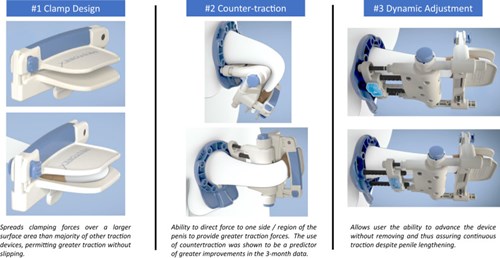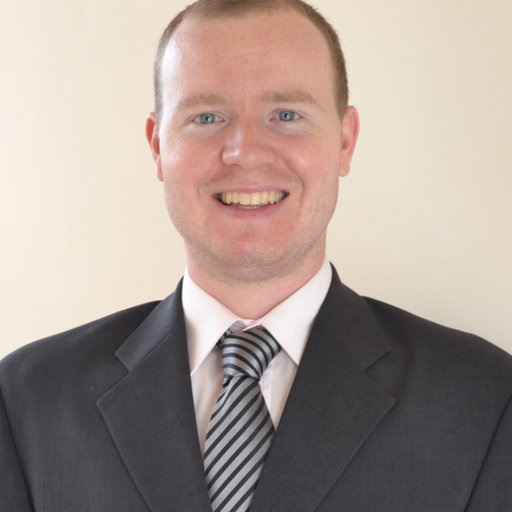By Kalli Spencer
Following a radical prostatectomy one of the potentials complications is a slight shortening of the length of the penis. This is because where the prostate is taken out a gap remains. The surgeon has to close the gap by reconnecting the urethral stump, which runs through the penis, to the bladder. Pulling the urethra internally towards the pelvis, pulls on the penis as well, potentially resulting in a relative shortening of the penis. Toussi et al and team at the Mayo Clinic in the United States have conducted a trial investigating the value of a penile traction device to assist patients with penile lengthening after surgery1.
History of penile traction devices
Penile traction therapy is not a new concept and several devices have been on the market for many years. The limitation of their use is the long duration of application from 2-9 hours per day to be effective. Due to discomfort, treatment compliance may be hindered resulting in poor outcomes.
The RestoreX device
This a new device which has an improved clamp mechanism, alteration in force delivered and ability to dynamically increase traction. Due to the new design patients only have to wear the device for 30 mins per day.

Fig 1: demonstrating key differentiators of RestoreX from other traction devices.2
Trial design
Eighty two men were enrolled in the clinical trial. It was randomized control trial so some received no penile traction therapy (PTT), some received PTT for 30 minutes per day for five days a week and the remainder 30 minutes twice per day for 7 days a week. Treatment was started one month after surgery and continued for up to five months.
Results
At 5 months the treatment group had on average 1.6cm increase in length as opposed to the controls at 0.3cm. In terms of patient satisfaction there was a 56% satisfaction rate in treatment versus 13% percent in the control group.
An additional beneficial outcome was noted. Erectile function was preserved or improved at greater rates among men treated with PTT versus the controls. There was also significant improvement in intercourse satisfaction and sexual encounter profile scores. There were no changes noted in the orgasmic and sexual desire scores. A lower medication requirement (Viagra, Cialis) was observed as well as the need for self-injections (intracavernosal) for erectile dysfunction. “A total of 93% indicated that they would recommend it to a friend, and 87% noted that they would utilize PTT post prostatectomy if they could redo therapy; 84% of treated men also reported that treatment resulted in a meaningful improvement overall.”
Adverse effects
Mild redness, discomfort and altered sensation were the only reported adverse effects from the device, resolving quickly when device usage was stopped making it very tolerable overall.
Limitations to study
Self-reported study limitations include that the study is conducted by the device designer, there is limited long term follow up, the average age of the participants is 60 years and the effectiveness in older age groups is unknown. External validation is required.
Conclusion
This is the first study that has demonstrated the improvement of erectile function with a device alone without requiring on demand medication. RestoreX has shown success in improving penile length in other diseases such as Peyronie’s disease. The results from this trial are promising and may inform the regular use of penile traction therapy as a recognised treatment option following a radical prostatectomy in the near future.
References
1. Toussi A, Ziegelmann M, Yang D et al. Efficacy of a novel penile traction device in improving penile length and erection function post prostatectomy: Results from a single center randomized, Controlled trial. Journal of Urology 2021.
2. www.sciencedirect.com/science/article/pii/S1743609520309395#fig1
About the Author

Kalli Spencer
MBBCh, FC Urol (SA), MMed (Urol), Dip.Couns (AIPC)
Kalli is an internationally renowned Urological Surgeon, specialising in oncology and robotic surgery. He trained and worked in South Africa, before relocating to Australia where he has worked at Macquarie University Hospital and Westmead Hospital. His passion for what he does extends beyond the operating room, through public health advocacy, education and community awareness of men’s health, cancer and sexuality.
Kalli has been involved with the Prostate Cancer Foundation of Australia for many years, advocating for improved cancer care and facilitating community prostate cancer support groups.







